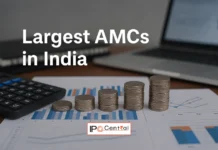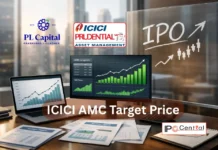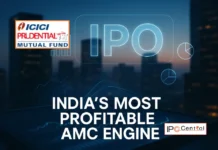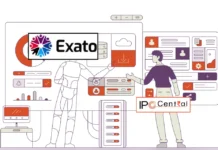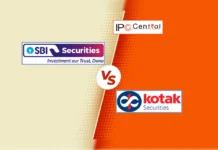Priced in the range of INR180 – 190 per share, Aster DM Healthcare IPO opens for subscription on Monday. Given the volatile market conditions, the company has reduced the IPO size and it now involves a fresh issue of only INR725 crore instead of INR775 crore. Similarly, changes have been made to the Offer For Sale (OFS) component which now involves 13,428,251 shares. In total, the IPO is aimed at raising anywhere between INR966.17 crore and INR980.14 crore. Hospital chains have had mixed fortunes on the bourses in the recent years with Narayana Hrudayalaya rewarding investors but Healthcare Global and Shalby disappointing with discounted listings. Through Aster DM Healthcare IPO Review, we try to find out if investors are going to be lucky this time.
Aster DM Healthcare IPO details | |
| Subscription Dates | 12 – 15 February 2018 |
| Price Band | INR180 – 190 per share |
| Fresh issue | INR725 crore |
| Offer For Sale | 13,428,251 shares (INR241.17 – 255.14 crore) |
| Total IPO size | INR966.17 – 980.14 crore |
| Minimum bid (lot size) | 78 shares |
| Face Value | INR10 per share |
| Retail Allocation | 35% |
| Listing On | NSE, BSE |
Aster DM Healthcare IPO Review: Fresh + OFS
The company’s IPO will comprise of fresh shares to the tune of INR725 crores which are proposed to be used towards these objectives
- Repayment and/or pre-payment of debt – INR564.2 crore
- Purchase of medical equipment – INR110.3 crore
- General corporate purposes
In addition, there will be an OFS by promoter Union Investments Pvt Ltd (UIPL). A total of 13,428,251 shares will be offered by UIPL through the OFS. UIPL currently holds 202,134,341 shares or 43.28% equity in the company while private equity firm Olympus owns 117,794,613 shares or 25.22% stake. Another 51,086,711 shares or 10.94% is owned by Rimco (Mauritius) Limited and IVF Trustee Company Private Limited is also an important shareholder with 46,537,491 shares or 9.96%. However, none of these investors will be selling their shares in the IPO. This is a big positive and shows that private investors see better times ahead.
Aster DM Healthcare IPO Review: Gulf-centric hospitals business
The Kochi-based company is one of the largest private healthcare service providers in the Gulf Cooperation Council (GCC) region. Starting with a single doctor clinic in Dubai in 1987, Dr Azad Moopen expanded to create a big network that has expanded to 323 operating facilities, including 19 hospitals with a total of 4,754 installed beds, as of 30 September 2017. The company’s network – under Aster, Medcare and Access brands – is fairly diversified with 9 hospitals, 90 clinics and 206 retail pharmacies in the GCC states; 10 multi-specialty hospitals and 7 clinics in India; and 1 clinic in the Philippines. The company had 17,408 employees as of 30 September 2017, including 1,417 full time doctors, 5,797 nurses, 1,752 paramedics and 8,442 other employees (including pharmacists).
The company’s GCC operations are headquartered in Dubai, United Arab Emirates and Indian operations are headquartered in Kochi, Kerala. GCC is the most important region for Aster DM and contributed nearly 81% of revenues in the six months ended 30 September 2017.
Aster DM Healthcare IPO Review: Inconsistent financial performance
Aster DM has maintained a superb track record of consistently growing revenues in the recent years. From INR1,938.8 crore in FY2013, the company’s top line expanded to INR5,967.9 crore in FY2017 and is on track to post its best figures this year with six month revenues of INR3,141.4 crore. While its revenue performance has been strong, the company has struggled when it comes to profits. After rising for three years, the company’s earnings fell to just INR8.2 crore in FY2016. FY2017 turned out to be better but profits were supported by exceptional gains on account of extinguishment of financial liabilities. As one can spot in the table below, net profit margins have been inconsistent in these years.
The situation isn’t better in the latest six months either as its expenses are still ahead of revenues. Nevertheless, it is because of the seasonality in the GCC region which gets lower revenue in the first-half of a financial year due to summer holidays and the month of Ramadan.
Aster DM Healthcare’s financial performance (in INR crore) | ||||||
| FY2013 | FY2014 | FY2015* | FY2016* | FY2017* | H1 FY2018* | |
| Total revenues | 1,938.8 | 2,889.6 | 3,899.0 | 5,275.2 | 5,967.9 | 3,141.4 |
| Total expenses | 1,787.9 | 2,579.3 | 3,592.9 | 5,236.7 | 6,275.2 | 3,207.3 |
| Profit after tax | 91.8 | 177.8 | 272.1 | 8.2 | 266.7 | -82.7 |
| Net margin (%) | 4.7 | 6.2 | 7.0 | 0.2 | 4.5 | -2.6 |
* As per Ind-AS accounting standards
Aster DM Healthcare IPO Review: Should you invest?
So far in this analysis, Aster DM Healthcare looks like a solid play in the healthcare industry, except the uneven profitability. There are reasons for this low margin profile (recently listed Shalby Hospitals has a much better margin profile) and this has roots in the aggressive network expansion in the recent years. Aster DM Healthcare has three revenue streams of hospital, clinic and retail pharmacy but it is the first one which accounts for majority of top line. In the six months ended 30 September 2017, the hospital segment contributed 49.29% of revenues, while the clinic segment accounted for 25.92% and retail pharmacy segment accounted for 24.75% of the top line. Since hospital is the biggest revenue stream, its fortunes are heavily dependent on this business line which requires capital investments.
The company increased its capacity from 1,419 beds as of 31 March 2013 to 4,754 beds as of 30 September 2017. This includes 670 beds at the Aster Medcity multi-speciality hospital in Kochi, Kerala. Out of its 9 hospitals in the GCC region, at least 4 have operational history of less than five years. The situation is a bit better in India where its strategy has revolved around acquisition of existing hospitals instead of greenfield investments.
The basic mathematics of hospitals dictates that it takes 4-5 years for a new hospital to achieve optimum occupancy level to offset capital investments made and other fixed costs, and it is only after this level that operational leverage kicks in. In its red herring prospectus, the company states that the occupancy rate of its GCC hospitals decreased from 62.03% in FY2013 to 60.01% and 50.87% in FY2017 and H1 2018, respectively. Relatively speaking, occupancy levels are better in India with FY2015, FY2017 and H1 FY2018 rates of 62.09%, 60.45% and 67.92%, respectively. The situation is complicated by the fact that average revenue per occupied bed (ARPOB) is much higher in GCC than in India. What it means is that the tailwinds of higher occupancy in India are offset by stronger headwinds in GCC.
Aster DM plans to build or expand 4 multi-specialty hospitals in the UAE in the next couple of years and also plans to add or expand 5 hospitals in India within the next 4 years. Since the company plans to open more hospitals going forward, it also means that Aster DM will continue to remain a work in progress for a considerable time. As individual hospitals start getting more patience, greenfield expansion or new hospitals will keep the occupancy levels at low levels.
Valuation wise, the company’s Earnings Per Share (EPS) of INR4.28 translates the price band of INR180 – 190 per share into the Price/Earnings (P/E) ratio range of 42.05 – 44.39. This is quite high considering its peer Fortis Healthcare is available at a P/E multiple of 18. Fortis may not be a good benchmark as it is currently embroiled in corporate governance issues. However, it is also difficult to value an inconsistent performer like Aster DM on the lines of better managed hospital chains like Apollo Hospitals and Narayana Hrudayalaya, which trade at higher multiples. One area where Aster DM beats almost everyone is Return on Net Worth (RONW). Its double-digit return ratio is way ahead of its comparable peers.
Overall, Aster DM Healthcare IPO Review tells us the story of a solid growth play which is still in the ‘work in progress’ phase. While we don’t doubt the company’s execution capabilities, the overall economics of the healthcare business mean it may be a long wait for investors before the company reaches to the stage of fat and consistent margins. Head to the discussion page to remain updated with what fellow investors have to say about the upcoming IPO.




